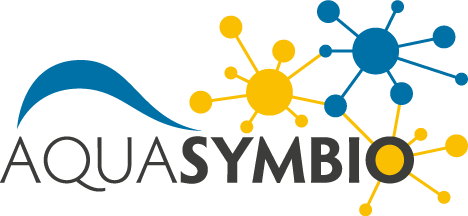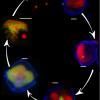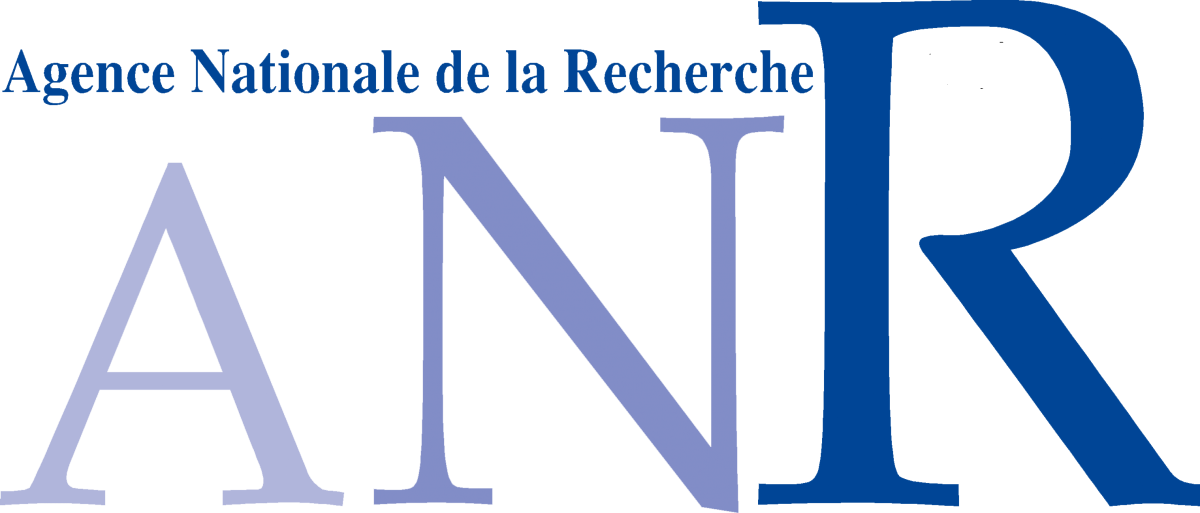Amoebophrya ceratii-species complex
Diagnosis
Diagnosis_Genus: Amoebophrya Koeppen 1984. Intracellular parasites. Smallest trophonts observed have 3 µm long, a gymnodiniales form, with a large hypocone and a small rudimentary epicone. The hypocone broadens at its base and forms a cup-shaped circumvallation, turning in spiral. The hypocone starts to cover the epicone (in other word, the epicone becomes progressively invaginated into the hypocone, forming a cavity, the mastigocoel, which is a characteristic of the genus Amoebophrya. This mastigocoel remains open by a small aperture at the apex of the trophont. Sporogenesis starts rapidly during this transformation. The inner surface of the mastigocoel is furnished with helically coiled ridges as a result of a continuous lengthening of the previous dinospore girdle during the trophic growth. Along these ridges countless flagella are inserted. Flagella of future dinospores (the free-living stage of the parasite) are produced inside the mastigocoel. At the end of the intracellular maturation, flagella started to beat, and what was the epicone at the origin, directed through the aperture of the mastigocoel, moved forward. This evagination make the flagella outside the structure, which is now called the vermiform. This action breacks out the host membrane, releasing the vermiform outside. This vermiform is closed forward (at the epicone side), but open in the back. When release, this part forms a large digestive vacuole that contains what remains from the host. This vermiform considerably strechs out with time. The spore chain forming the vermiform rapidly separates to produce spores (gymnodinial shape), generally of two different sizes (macrospores and microspores). These spores have a large epicone and a reduced hypocone (the reverse of what is observed during the first stage of the trophont).
Diagnosis_species: Amoebophrya ceratii Cachon 1964. This is a species complex, that belong to Marine Alveolate group II (likely synonymous to Amoebophryidae, Guillou et al. 2008).
Endoparasitoid of Gymnodiniales and Peridiniales. This parasite also infects other closely related parasites such as Amoebophrya acanthometrae, A. leptodiscis and Hollandella mycetoides. Generally, the trophont starts to develop inside the cytoplasm in Gymnodiniales and inside the nucleus in Peridiniales. The free-living stage, the dinospores, adheres to the host surface using trichocysts and flagellar hairs. During penetration, electron dense bodies within a microtubular basket form the membrane of the parasitophorous vacuole (see Miller et al. 2012). Within the nucleus, this parasitophorous membrane is lost (see Miller et al. 2012). More than one parasite can penetrate the host, but ony one develops in general. This species forms a cytopharynx, supported by a microtubular structure. This cytopharynx ends either inside the cavity of the mastigocoel or directly inside the cytoplasm of the trophont. It is unclear whether cytoplasmic parasites, surrounded by the parasitophourous membrane, develop this cytopharynx as well. This cytopharynx helps in the transit of pre-digested particles which are then suck inside this cytopharynx and totally digested inside the trophont. Sporogenesis continues when the parasite is released ouside its host, during the vermiform stage.
Etymology
Amoebophrya: looks like to an amibe (Koeppen 1894).
Type species
The type species (lectotype) of the genus Amoebophrya is Amoebophrya acanthometrae Borgert 1897.
Ecology
Substrate_spores: planktonic
Substrate_trophont: endophytic
Substrate_trophont: endozoic
Sociability_spores: solitary
Sociability_trophont: solitary
Sociability_trophont: colonial
Salinity: marine
Salinity: variable (estuary)
pH: neutral
Feeding: hyperparasitism (by phagotrophy)
Feeding: parasitism (by phagotrophy)
Life cycle
Phases_alternance: haplontic
Generation: <1 month
Reproduction_mode: asexual
Symbiont: horizontal_active-penetration
Feeding behaviour
Mode of locomotion
Reference(s)
Observation site(s)
HOSTS
- 1 of 2
- next ›


















